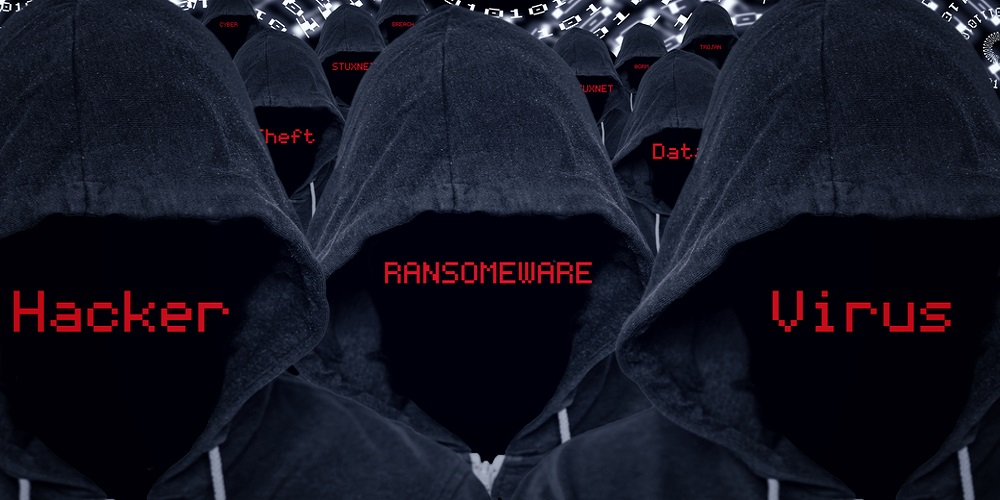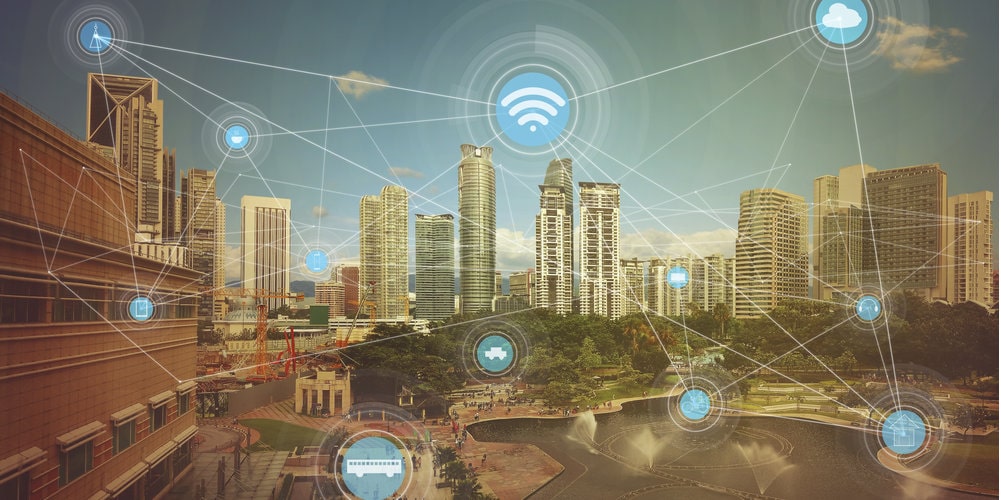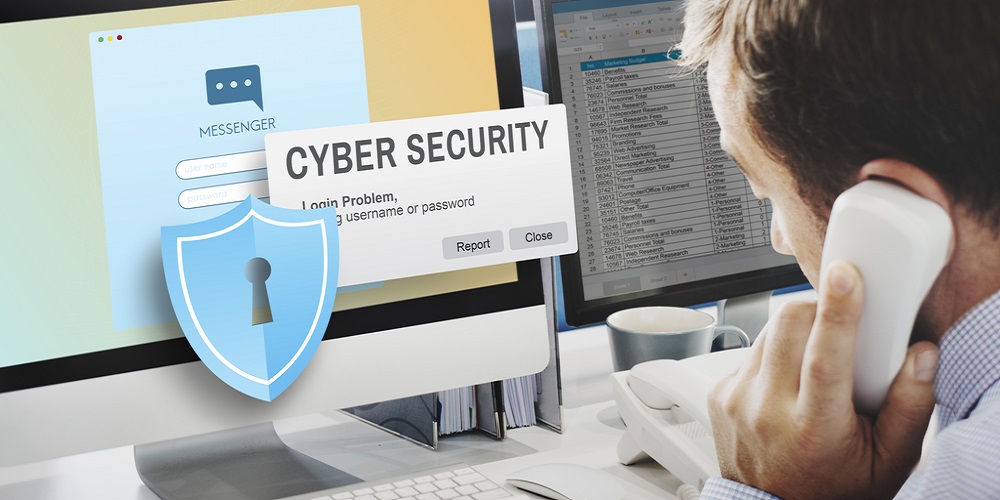Over the years, organizations have become more open to adopting and investing in cybersecurity. The threats that modern organizations face include hacking attempts, data breaches, corporate espionage, data theft, ransomware attacks, to mention a few. Let’s have a look at the cybersecurity trends for the upcoming year.
» LEARN MORE: See Why Azure Makes The Difference Both in Performance & Costs
As technology continues to grow and evolve, the nature and complexity of threats as well as the damages caused by them is bound to change as well. Hackers are able to target larger organizations in tandem with smaller businesses and innocent consumers as well.
The COVID-19 pandemic has also had an impact on the entire ecosystem. Remote work has become the preferred choice for many organizations but that has also ushered in a number of challenges for cybersecurity professionals.
7 Enterprise Cybersecurity Trends
Cybersecurity trends have been a point of conversation for businesses even if they used to be brushed off in the past. To ensure safe digital presence and because of the heavy reliance of businesses on the internet, enterprises have renewed their focus on cybersecurity.
That is because, in recent times, enterprises in particular have become the target of cyber attacks and threats. While enterprises can afford to hire dedicated teams and resources, smaller businesses might favor cyber security service providers.

Here are seven enterprise cybersecurity trends that will help you keep updated, that you should know about:
#1—An Increase In Ransomware Attacks
Ransomware attacks have been on the rise and are unfortunately set to grow in 2022 and beyond. As more and more businesses grow online, malicious actors have an increase in targets. Not only do hackers have an increased selection of victims, but also in addition to targeting small businesses, they are attacking industry giants.
The most notable shift of ransomware attacks was back in 2020 as the COVID-19 pandemic hit. It is one thing for a small business to not have the resources to deal with modern security threats. But to see enterprises that have well-funded and staffed cyber security departments is particularly concerning for end users.

Some of the latest ransomware attacks that have targeted larger organizations in 2021 include the attack on Colonial Pipeline Company (nearly $5 million transferred in Bitcoin with a portion of the ransom being recovered by the FBI), CNA Financial ($40 million paid in ransom) and Brenntag ($4.4 million paid in ransom).
One thing to note about ransomware attacks is the way that hackers are joining hands and forming entire communities to carry out these attacks. The concept of ransomware as a service (RaaS) is also on the rise.
The people associated with this new niche are providing malicious tools and code from a couple of dollars to thousands of dollars depending on the capabilities of the service provided.
#2—A Lack Of Cybersecurity Professionals
The demand for competent cybersecurity professionals has been on the rise for years now. A lack of cybersecurity professionals is one of those cybersecurity trends that you should expect unless there is a mass influx of talent in the field.
According to certain estimates, the number of unoccupied cybersecurity positions in 2021 are around 3.5 million. The field of cybersecurity is rapidly growing and has a lot of room for individuals to pursue it as a career. Not only will these new entrants be able to make a handsome living, but they will also be responsible for protecting businesses and innocent users.
The median pay for some of the roles in cybersecurity is pretty lucrative. The median pay for an information security analyst sits at a little over $100,000 per year. The only caveat to becoming a cybersecurity professional is that higher degrees and certifications will dictate career trajectory for most individuals.
With that being said, the investment in increasing your skills as a cybersecurity professional will have almost guaranteed results.
Some of the most popular cybersecurity certifications include:
- Certified Ethical Hacker
- Certified Information Systems Auditor
- Systems Security Certified Practitioner
- Certified Information Systems Security Professional
- Certified Information Security Manager
There are a number of other certifications as well favored by learners and valued by organizations globally. Becoming adept at one skill like penetration testing and then building your skillset is going to be the best path for most individuals.
#3—New Technological Innovations
The pace at which new innovations and technology have reached markets is quite astounding. Smart devices and the rapid growth of IoT has unfortunately become a target of hackers as well.
According to Business Insider, by 2027, more than 41 billion IoT (Internet of Things) devices will go online and become connected. There is a lot of merit in being connected to the internet or having the ability to seamlessly experience where you are or what activity you’re doing at the moment.

It is not too far to foresee that end users will be more willing to own smart devices and to dabble with IoT. When this becomes the norm, the privacy and digital security concerns will be amplified given the sheer number of targets and similar devices that can be targeted.
#4—Growing Risk For Remote Workers
Remote workers might not have been on the target back in 2019 or even during the early 2020. But as the pandemic set in and remote work became the norm, hackers saw a new type of target.
Cybersecurity trends 2025 show that a little more than 36 million Americans will be doing remote work by 2025 (according to Upwork).
Cybercriminals are not only taking full advantage of technical vulnerabilities, but they are also not backing down from targeting unsuspected users. Not being attentive when working online can cause you to click on a phishing link or even download malware of sorts.
People working remotely should be more in tune with some of the common ways these miscreants target them online and how they can protect themselves.
With so many people joining the remote workforce, there are two things to expect. First—there will be an increase in attacks by hackers and new vulnerabilities will be brought to light. The second thing that will happen as a result would be an overall improvement in digital security tools for remote workers.
#5—Growth Of Zero Trust Platforms
The pandemic has given a boost to a number of technologies, one of them being Zero Trust platforms.
Top-notch zero trust platforms incorporate security functions into almost-invisible tooling, according to Forrester, in a way that end users but just have to operate in more securely.
Zero trust platforms remove a lot of assumptions. While this may add more overhead on technical teams, it does make accountability a lot more easier. It also helps ensure that the business is able to protect their customers from themselves.
A zero trust platform relies on four core principles. Starting with the first one—no user should be entitled to an organization’s trust as a default since a user can always be compromised at any time. Similarly, services like firewalls and VPN shouldn’t be considered as a complete solution as they only protect the perimeter.
Likewise, authentication and identity checks should take place across the network. And finally, breaking up larger systems into smaller ones and segmenting them will help minimize damages in case of a cyber attack.
There is ample room within this area for new startups to provide services and further explore the concept of Cybersecurity-as-a-service (CSaaS).
#6—Targeting Of Older And Legacy Systems
Older systems and enterprises that use legacy systems are bound to be vulnerable. There can be some improvements with regards to security and operational capabilities, but these systems need to be retired to ensure that the enterprise is not vulnerable.
Cyberattacks are becoming more complex and coordinated by the day right along with modern-day technology. In contrast, these legacy systems pose a security risk for even the largest of the organizations that choose to use them.
Older supply chain systems have also become a prime target for hackers. Causing a disruption within these crucial systems not only causes harm to the business, it also puts the lives of people who depend on well-oiled supply chains at risk.
In a lot of cases, it might not be a possibility for the enterprise to quickly adopt a newer system. Training staff and making sure the new system will be more beneficial is going to be a challenge and a cross-team effort.
Cybersecurity professionals need to ensure that they are adequately training company personnel on how they can use the legacy systems without compromising digital security. This is going to be a challenge, but it is a necessity until the business adopts a new and improved system.
#7—Popularity Of Cyber Insurance
Cyber insurance is a growing phenomenon and you can genuinely expect it to become one of the top cybersecurity trends in 2022 and beyond. The need for cyber insurance is the damage that can be caused by well-coordinated and executed cyber attacks.

According to AdvisorSmith, some of the most frequent causes for claiming cyber insurance include hacking, ransomware, and phishing. Any business or organization that deals with customer information like hospitals, accountants, and marketing agencies will generally pay the highest premiums to be insured from cyber attacks and harm.
The written premiums for cyber coverage alone has increased by 29 percent back in 2020. Organizations of all sizes and regardless of the industry are adopting and applying for insurance protection. These organizations are taking such steps to avoid paying the damages caused by:
- ransomware attacks
- data breaches
- network hijacking
How To Step Away From Cybersecurity Threats
Preventing cyberattacks and making sure your organization is least vulnerable in the case of an attack is going to be critical.
Here are some of the ways you can step away from cybersecurity threats and protect your organization and people:
Invest in Employee Training:
Investing in employee training is one of the best things you can do to limit the possibility of a cyber attack. In a lot of cases, the main cause behind an online vulnerability would be human error.
Taking the time to train employees at least on the basics of cyber security is going to help the organization reduce its vulnerabilities to cyber attacks.

Limit Access to Company Systems:
Company systems and assets should ideally be available only to the people who need them. Both physical and digital access to organizational assets needs to be monitored to ensure that there is no foul play.
Ensure that Software Being Used is Up-to-date:
Using the latest software is important. A lot of updates carry security patches that cater to existing vulnerabilities within the code.
It does take time and resources to make sure that all computer systems and hardware is up-to-date with the latest software. But it’s a fair tradeoff if you want to prioritize cybersecurity.
Install Firewalls
Having firewalls is another fundamental aspect to organizational security. Firewalls help ensure that viruses and other malicious pieces of code are not able to penetrate into the system.
Firewalls also make sure that the traffic coming in and out of the organization is authorized.
How To Prevent Cyberattacks
Preventing cyberattacks is a top priority for businesses regardless of their size. Smaller businesses and even mid sized businesses might not have the manpower or resources needed to meet their organizational needs.
One option is to opt for a service provider that is well versed with providing cloud services. Not only does the vendor need to provide cloud services, they also need to ensure that the organization’s cybersecurity and digital assets are safe from harm.
Logic V helps small and mid sized business owners to scale their businesses by deploying and managing Microsoft Azure. Secure cloud backup, disaster recovery, active directory identity management and the provision of secure virtual machines make Logic V a safe bet.
Scale your business online and save your business from digital harm by choosing Logic V today.

Trends within cybersecurity are constantly evolving and being replaced by new developments. Here are the recent trends in cybersecurity:
– An increase in ransomware attacks
– A lack of cybersecurity professionals
– New technological innovations
– Growing risk for remote workers
– Growth of zero trust platforms
– Targeting of older and legacy systems
– Popularity of cyber insurance
Cybersecurity trends in 2021 have a lot in common with the trends in 2020. Remote working will definitely impact organizational security levels. IoT devices will become more mainstream, and with that, become a target for hackers. Cloud services will become a target as well as they are catering to a lot of people due to the persistence of remote work.
There are a number of threats you should look out for in 2021. Financial cyber threats are going to be targeting newer innovations like fintech. Corporations will need to ensure that they are protecting themselves from online threats as remote work becomes the norm. 5G is going to be another vector of concern for organizations that choose to adopt it.
Cybersecurity as a field is expanding rapidly with not enough people to fill its ranks. There are millions of vacancies left unfilled due to the lack of skilled professionals. Organizations and enterprises are also willing to invest heavily into cybersecurity as it has become a modern necessity for businesses.
